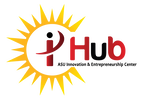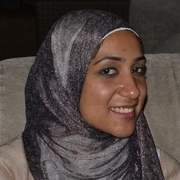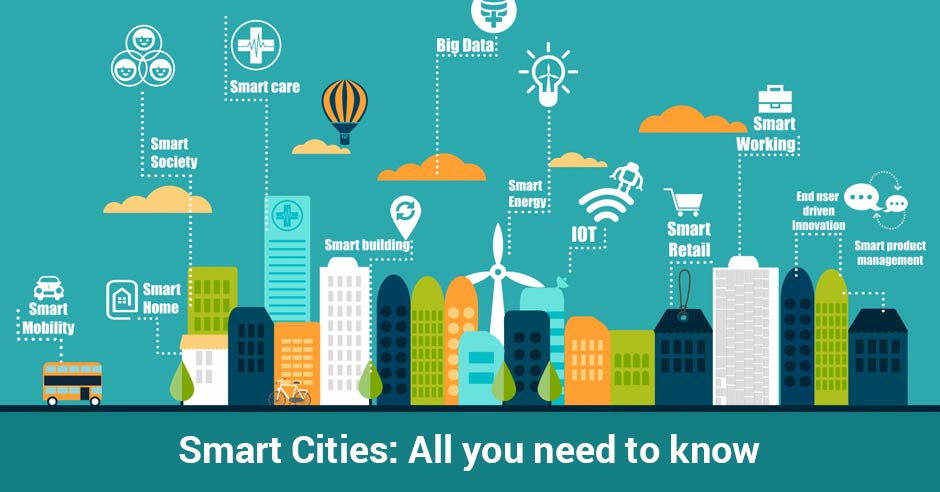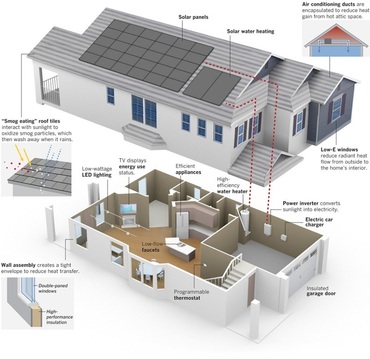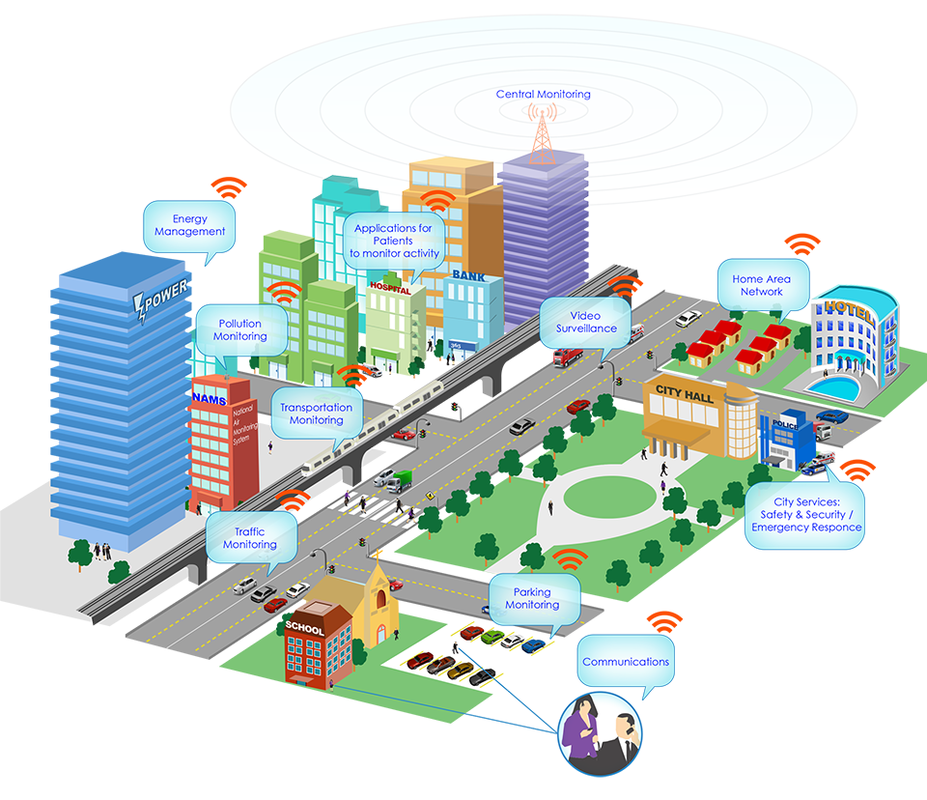Smart Cities Workshop |
Instructor
|
Registration Status
|
|
|
Smart Cities
Urbanized cities, nowadays, face environmental, social and economic challenges such as inadequate infrastructure and shelter, health risks and poor education, natural resource depletion and environment degradation, water shortage and pollution, energy crises, climate change, and lack of food security. These challenges were the result of rapid urbanization, high rate of fossil fuel consumption and other energy resources, increased water consumption, waste and pollution traces from industries, lack of good governance. Different actions worldwide, have evolved facing these challenges that negatively affect the urban environment and the human health such as Smart cities, Eco-cities, sustainable cities, green cities and Zero energy cities. |
Smart Cities can be defined as “is an urban development vision to integrate multiple information and communication technology (ICT) solutions in a secure fashion to manage a city’s assets – the city’s assets include, but not limited to, local departments information systems, schools, libraries, transportation, hospitals, power, water supply networks, waste management, law enforcement, and other community services.”
Smart cities aim to create a good public realm with the aid of technology to enhance the efficiency of services provided that meet the needs of the inhabitants, throughout the following:
Smart cities aim to create a good public realm with the aid of technology to enhance the efficiency of services provided that meet the needs of the inhabitants, throughout the following:
- Efficient use of physical infrastructure through artificial intelligence
- Mobilize the community participation with the government through virtual e- platform named e-participation
- Learn, adapt, and innovate effectively to the changing circumstances of the City.
Objective of this workshop:
It is required to design a neighborhood that is a part of smart city to be built north of Safaga on the shore the Red Sea, which is characterized by high level of solar radiation. The neighborhood includes energy efficient smart homes, centralized commercial and administration building complex, green infrastructure network, and high-tech transportation modes.
Teams
Each group should choose ONLY one of the following to design:
It is required to design a neighborhood that is a part of smart city to be built north of Safaga on the shore the Red Sea, which is characterized by high level of solar radiation. The neighborhood includes energy efficient smart homes, centralized commercial and administration building complex, green infrastructure network, and high-tech transportation modes.
Teams
- You will form teams of 6-8 people.
- At least half of the team have to be juniors or seniors.
- At least 25% have to be Sophomores.
- The best team will have students from different majors.
- Suitable disciplines: ARC, UPL, LAAR, MCT, ECE, CSE, COMM, CESS
Each group should choose ONLY one of the following to design:
|
1. A single family energy efficient smart home and the surrounding landscape: the design should encompass the use of renewable energies, available materials for construction, building orientation, flexible means of construction.
The expected output:
|
|
2. Neighborhood design: the design should encompass the use of renewable energies, high tech mobility infrastructure, buildings orientation, and Green infrastructure design.
The expected output:
|
